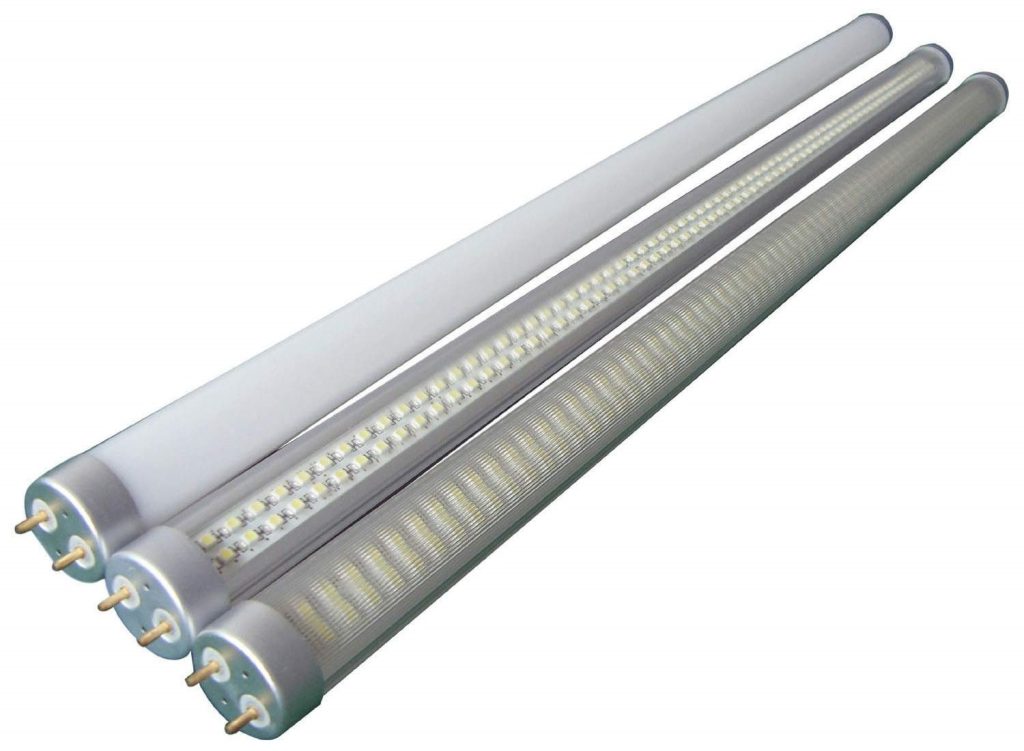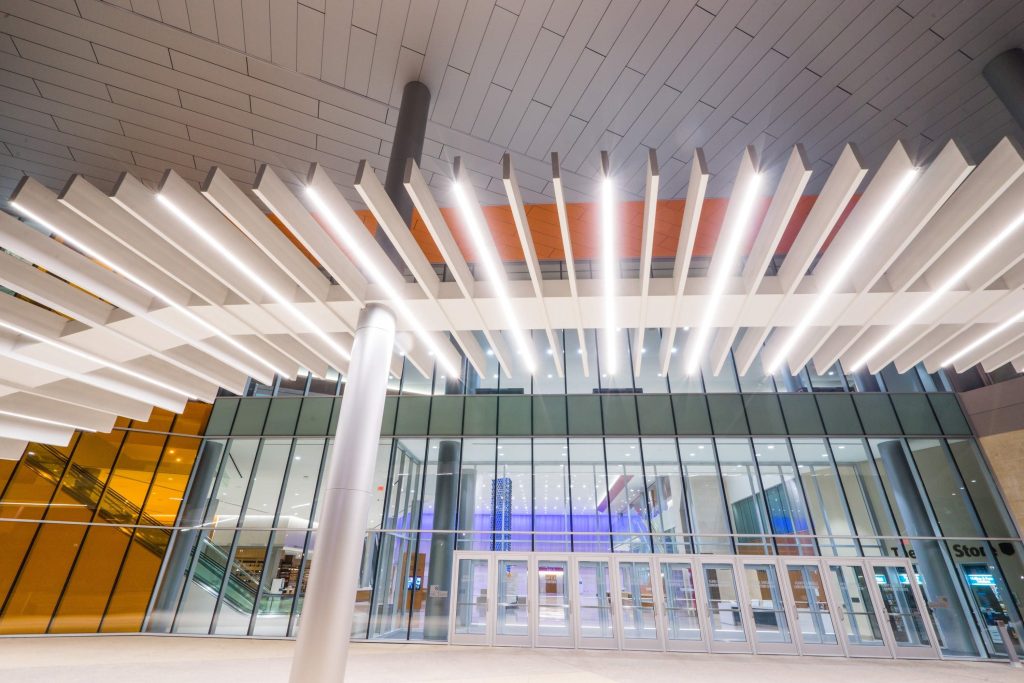LED Tube Lights vs LED Bulbs: Which Consumes More Electricity?
The Exciting World of LED Technology
Light-emitting diodes have transformed modern lighting. Initially used as tiny red indicators in electronics, they’ve evolved into powerful, energy-efficient lighting systems found everywhere – from residential homes to industrial warehouses.
LEDs function by allowing electrical current to pass through a semiconductor (the diode), which emits light with minimal heat. This fundamental principle has led to a wide variety of LED applications – from LED bulbs lighting up your living room to modern LED tube lights illuminating entire office floors. LED technology continues to innovate with variants like:
- RGB LED bulbs and tubes – customizable mood lighting.
- Solar LED bulbs and tubes – energy-saving lighting powered by the Sun.
- Smart LED bulbs and tubes – adjustable brightness and color via app or voice control.
- LED grow tube lights – tailored light spectrums to enhance plant growth.
- UV LED bulbs and tubes – used in sterilization and industrial processes.
At the core of the LED revolution are two of the most widely used forms of LED lighting: LED bulbs and LED tube lights. Both are highly efficient, long-lasting, and increasingly common – but they serve different purposes. Naturally, one question arises for many consumers: do LED tube lights consume more electricity than LED bulbs?
LED Tube Lights: Lighting the Bigger Picture
LED tube lights are long, cylindrical fixtures designed to replace the traditional fluorescent tubes often found in commercial and industrial environments. Common in offices, schools, warehouses, hospitals, and garages, these lights deliver bright, uniform illumination over large areas. Because of their physical size and lumen output, they are ideal for environments that demand wide light coverage.

In terms of energy consumption, LED tube lights typically draw between 12 and 20 watts for a standard 4-foot tube, which can produce up to 3,000 lumens. This is significantly more efficient than the 32-watt fluorescent tubes they replace, yet the power draw is indeed higher than that of a standard LED bulb – because tube lights are built to serve a different purpose. For example, a 4-foot LED tube consuming 16 watts might illuminate a workspace with 2,200 lumens of brightness, while an LED bulb used in a desk lamp might use just 9 watts to produce around 800 lumens.
Some tube lights are designed with special features. Smart versions can be dimmed or controlled remotely via smartphone or voice command. Solar-powered models offer off-grid lighting for outdoor areas. There are even retrofit versions that allow easy replacement in older fluorescent fixtures, making them practical for upgrading existing systems without complex rewiring.
LED Bulbs: Compact Efficiency for Everyday Spaces
In contrast, LED bulbs – like the commonly seen A19 shape – are compact and designed for smaller, more focused lighting needs. You’ll find them in table lamps, ceiling fixtures, reading nooks, bedrooms, and bathrooms. They typically consume between 7 and 10 watts while producing around 800 to 1,600 lumens, depending on the model. This makes them ideal for residential environments where large-scale lighting isn’t necessary.
Despite their smaller size, LED bulbs offer considerable versatility. Smart bulbs can adjust brightness or color at your command. RGB options allow you to shift lighting tones to set a mood. Some bulbs are UV-enabled for specialized tasks like air purification or sterilization. Overall, LED bulbs are designed for convenience, ease of installation, and low daily power use.
Power Consumption in Perspective
So, do LED tube lights consume more electricity than LED bulbs? The answer is Yes – in absolute terms, a tube light generally uses more power than a bulb. But this doesn’t mean they are less efficient. The real metric that matters is not just wattage, but how much light is produced per watt consumed.
| Feature | LED Tube Light | LED Bulb |
|---|---|---|
| Typical Wattage | 12W–20W (per 4-ft tube) | 7W–10W (standard bulb) |
| Light Output | 1,800–3,000 lumens | 800–1,600 lumens |
| Efficiency | 100–150 lumens per watt | 100–130 lumens per watt |
| Best Use Case | Large spaces needing uniform light | Small rooms needing focused light |
| Example | 4-ft 16W tube → 2,200 lumens | 9W bulb → 800 lumens |
Consider this comparison: a 16-watt LED tube that produces 2,200 lumens is actually more efficient than a 9-watt LED bulb generating 800 lumens. Both offer excellent lumen-per-watt performance, but their energy use is tailored to their function. In spaces where you need bright, evenly distributed lighting over a wide area, the tube light’s higher wattage is justified. In a bedroom or study, an LED bulb’s lower energy usage makes it the smarter fit.
Context matters greatly. In one study of a commercial warehouse retrofitted with 100 LED tube lights, the switch from fluorescent to LED saved more than 19,000 kilowatt-hours annually, even though the LED tubes each consumed 18 watts. Meanwhile, a household replacing five incandescent bulbs with 9-watt LED bulbs could save around 470 kilowatt-hours per year – less overall, but still significant given the scale and purpose.
What Influences LED Energy Use?
Several factors determine how much electricity an LED light will consume. First, size matters – larger lights like tube fixtures naturally draw more power due to their extended surface area and the greater number of LEDs within. The type of LED lights also plays a role. RGB or smart-enabled lights might draw slightly more power to support additional circuits and features, though the difference is often negligible.
Usage habits also contribute. A tube light left on continuously in an office will consume more power over time than a bulb that’s only turned on for a few hours each evening. External factors like voltage fluctuations can also impact performance. While most LEDs are designed to handle minor variations, persistent instability in power supply can cause increased energy draw or reduce the product’s lifespan.
Case Studies – Real-World Applications & Comparisons
Commercial Usage: LED Tube Lights in Action
In commercial settings like shopping malls or factories, LED tube strip lights and LED tube grow lights serve as an excellent choice due to their broad light distribution, often replacing traditional fluorescent fixtures. These case studies revealed that despite higher upfront costs, the longer lifespan and energy savings of LED tube lighting outweighed initial expenses.

Residential Usage: LED Bulbs in Play
On the other hand, residential settings typically favor LED bulbs. Due to their lower intensity and more focused lighting suitable for home interiors, they consume less power overall. A study conducted on solar LED tube lights used for landscape lighting showed that while these were effective for outdoor illumination, standard LED bulbs performed better indoors in terms of energy efficiency.
Myths vs Facts about LEDs & Energy Consumption
Debunking Myths about LEDs’ Energy Usage
Despite the underlying facts about their energy efficiency, myths abound regarding LEDs’ energy usage – from beliefs that they’re too expensive to run to misconceptions about harmful radiation emitted by UV LED tube lights or LED vintage tube lights. However, research has consistently shown that while the initial cost may be slightly higher, LED lights offer significant savings over time due to reduced electricity usage.
Facts Backed by Scientific Research
Scientific research has established unequivocally that LEDs consume far less electricity than conventional incandescent or fluorescent light sources. They achieve this by converting a higher percentage of electricity into light, while the remainder is emitted as heat. Moreover, LED technology has evolved to a point where RGB LED tube lights or LED tube retrofit lights also prove energy efficient.
Choosing the Right Option for Your Space
When deciding between an LED bulb and a LED tube light, think about the size of your space, the kind of lighting you need, and how often the light will be in use. In small or enclosed rooms, LED bulbs are the natural choice. They’re easy to install, consume very little power, and provide focused lighting where needed. For larger areas like kitchens, garages, offices, or hallways, tube lights offer bright, consistent lighting that makes the higher wattage worthwhile.
| Application Area | Recommended Option | Why |
|---|---|---|
| Bedrooms & Studies | LED Bulbs | Focused light, low power, easy replacement |
| Kitchens & Living rooms | LED Bulbs or Smart Bulbs | Versatile and dimmable options |
| Offices & Hospitals | LED Tube Lights | Uniform brightness and extended coverage |
| Garages & Workshops | LED Tube Lights | Bright, wide-angle illumination |
| Outdoor Pathways | Solar LED Tube Lights | Off-grid energy efficiency |
For those looking to maximize energy savings, smart LED tube lights with dimmable functions or motion sensors can optimize usage based on time of day or presence. Outdoors, solar-powered LED tube lights offer excellent performance without adding to your electricity bill.
Conclusion: Do LED Tube Lights Consume More Electricity than LED Bulbs?
LED Bulbs and Tubes – Both Energy Efficient, Each for Its Purpose
LED bulbs and LED tube lights each bring their own strengths to the table. While tube lights do consume more power, they are built to brighten larger areas and, watt-for-watt, are just as efficient – or even more so – than bulbs. The key is understanding your lighting needs and choosing the right tool for the job.
Whether you’re creating a comfy ambiance with a smart LED bulb in your living room or upgrading an office space with retrofit tube lights, both options can help you save money and reduce your environmental footprint. With LED technology, efficiency doesn’t have to mean compromise – it simply means choosing wisely.
You may also be interested in the following posts:
